In 1909, the ‘length of time for wearing mourning has greatly decreased during the past five years, as formerly there was such an exaggeration of this that sometimes the young people in a family were kept in constant black, owing to the death of successive relatives.’ (Household Companion: Book Of Etiquette, 1909)
Why wearing Mourning?
Wearing mourning clothes ‘serves as a protection to those whose deep sense of loss induces them to avoid many social duties, and who would escape from thoughtless and painful allusions.’ (Household Companion: Book Of Etiquette, 1909)
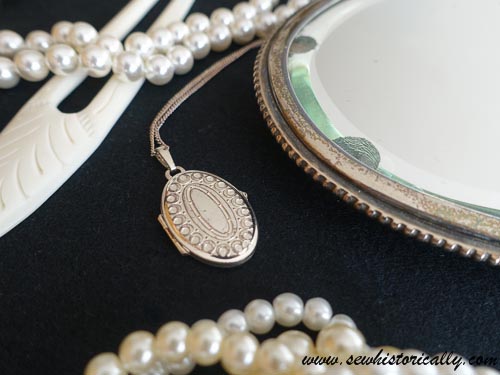
‘We do not advise people to rush into black for every slight bereavement, nor, on the other hand, to show the utter disregard some do on the death of their relations, and only acknowledge the departure of those near and dear to them, by a band of crape round the arm. This is the mark of mourning adopted by those in the services who have to wear uniform, but hardly a fitting way of outwardly showing respect to the memory of those who have been called away from us, and whose loss we deplore. A short time since, a lady appeared in a new ruby satin dress, with a band of crape around her arm. The fact of the dress being new, showed that poverty did not cause this incongruity. It is hardly ever those who are styled “the poor,” who err so against the accepted ideas of decency and respect. They always, however straitened they may be in circumstances, contrive to wear mourning for their deceased relatives.
When black is fashionable, no difficulty is found in wearing it, and you meet all your friend so attired, but when it becomes a question of duty, these objections are raised as to the unnecessary expense, and the inconvenience of so dressing. The majority adhere in this respect to the customs their parents have followed; but the advanced few are those who air such sentiments, talk of the “mourning of the heart, not mere outward woe,” and not wearing what is really mourning, go into society on the plea, “Oh! we know that those who are gone would not wish us to grieve for them.” This may be all very well, but in the case of husband, wives, parents, brothers, sisters, aunts, uncles, and the nearer-related cousins, decency requires some outward mark of respect to their memory.’ (Collier’s Cyclopedia, 1901)
Mourning stages
Deep mourning
‘For deep mourning, black stuff dresses, heavily trimmed with black crape, and long crape veils, are worn.’ (Household Companion: Book Of Etiquette, 1909) Mary Stuart bonnet or small toque hat, widow’s cap, no ornaments except jet, no furs. 1900s crape-covered dress with veil and parasol. Photograph of widow in crape-covered dress with bonnet and veil. Photograph of two women in crape-covered dresses (in the middle of the page).
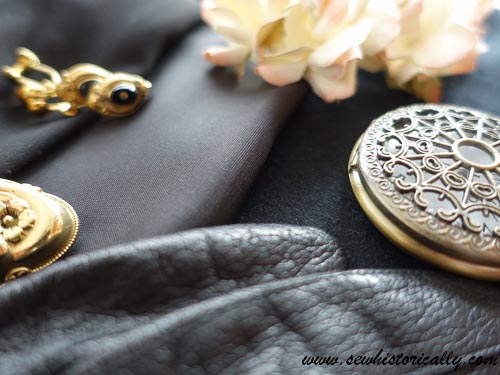
‘For gentlemen, at first plain black cheviot suits, with broad crape bands on their hats, and black gloves.’ (Household Companion: Book Of Etiquette, 1909)
Second mourning
‘During the second period the crape is left off, and plain black alone is used’. (Household Companion: Book Of Etiquette, 1909)
Black dress trimmed with black crape, no cap, only dark furs. 1904 painting of older widow. 1900s wool dress trimmed with crape. 1900s crape-trimmed wool dress.
Gentlemen ‘cease to wear black clothes, varying these by dark suits of black and grey, and the width of the crape hat-band is narrowed.’ (Household Companion: Book Of Etiquette, 1909)
Half-mourning
‘For half-mourning light black, black silks, black and white, or costumes of mauve or grey, can be worn.’ (Household Companion: Book Of Etiquette, 1909) The colors are ‘restricted to black, white, and various shades of the blue lavenders and violets; and occasionally greys; in England, cardinal is added to this list, accepted because of its ecclesiastical use.’ (The Art Of Millinery, 1909).
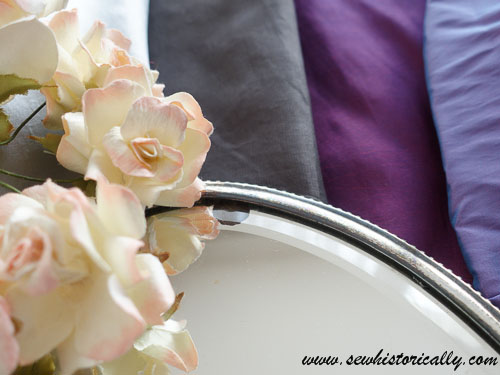
‘Attempts have been made to bring in some colors, such as red or violet, and we consider them suitable to slight mourning; but the only color really admissible for half-mourning is gray, or the pales lavender, gray gloves sewn with black, gray and black reversible ribbons, gray and black feathers, gray flowers mixed with black, and so on.’ (Collier’s Cyclopedia, 1901) Black and white dress. Black and purple dress. 1902 mauve silk evening dress with sequins.
For gentlemen ‘the black hat-band is the one emblem of grief retained.’ (Household Companion: Book Of Etiquette, 1909)
How long should one mourn
Widow
Deep mourning for one year, second mourning for one year, then half-mourning for six month. ‘crape two years, slight mourning one year (cut in half if desired). Long veil six months, lighter six months.’ (The Art Of Millinery, 1909) ‘The skirt, which is generally cut quite plain, and slightly trained, is completely covered with crape, put on quite plainly in one piece; the body and sleeves are also trimmed with crape — the dress, in fact, presenting the appearance of one of crape. […] Second mourning cap left off, less crape and silk for nine months (some curtail it to six), remaining three months of second year plain black without crape, and jet ornaments. At the end of the second year the mourning can be put off entirely; but it is better taste to wear half mourning for at least six months longer […] many widows never wear colors any more, unless for some solitary event, such as the wedding of a child’ (Collier’s Cyclopedia, 1901)
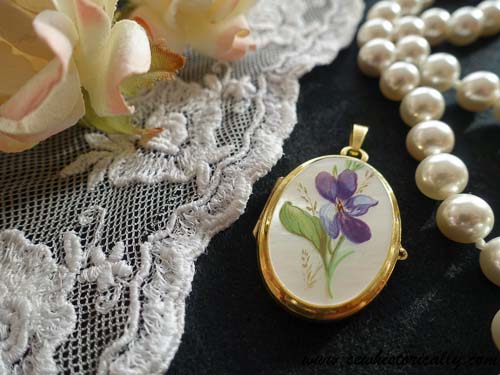
‘The following list would be ample for a widow’s outfit. We have given a rather large one because, of course, it can be curtailed as wished.’ (Collier’s Cyclopedia, 1901)
- crape-trimmed henrietta dress
- dress trimmed with rainproof crape
- crape-trimmed henrietta mantle with silk lining
- crape-trimmed cloth jacket
- crape bonnet with long veil
- rainproof crape bonnet with long veil
- 12 muslin or lawn collars and cuffs with deep hems
- one stiff black petticoat
- 4 black silk or cashmere stockings
- 12 cambric handkerchiefs with black border, 12 finer cambric handkerchiefs
- lisse, tulle, or tarlatan caps
- crape-trimmed silk parasol for summer (without lace or fringe in deep mourning)
- muff of dark fur or Persian lamb
For Parent and grown-up Child
One year ordinary mourning with veil. ‘crape six months, black without crape three months, slight mourning three months. Veil three months.’ (The Art Of Millinery, 1909) ‘six months in crape trimmings, three in plain black, and three in half mourning. It is, however, better case to continue the plain black to the end of the year, and wear half-mourning for three months longer.’
For Brother or Sister
Six month to one year. ‘Crape for three, plain black for two, and half mourning for one month […] Silks can be worn after the first month if trimmed with crape. ‘
For a young Child
Six month

For Grandparents
Three month or longer ‘simple black without a touch of crape […] After that the usual garments, or garments somewhat modified’ (Collier’s Cyclopedia, 1901)
For an Infant
Three month
For Uncles, Aunts, Nephews and Nieces
‘Crape is not worn, but plain black, with jet for three months.’ ‘Face veils; no long veils.’ (The Art Of Millinery, 1909)
For Parents-in-law
‘Black, without crape for one month […] after one month of black and white, with lilac, should follow.’
For Cousins
‘Six weeks are considered sufficient, three of which would be in half-mourning […] For Cousins less closely related, mourning is hardly ever put on’
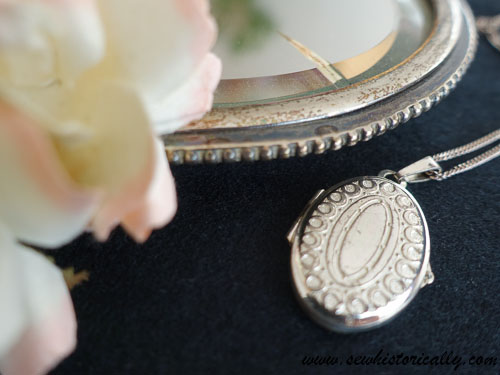
Servants’ Mourning
‘Servants are not usually put into mourning except for the members of the household in which they are living, not for the relatives of their masters and mistresses, and very frequently only for the heads of the house, not for the junior members. A best dress of Victoria cord of alpaca, two cotton dresses, black for mourning wear while at work. A cloth jacket, in case of master of mistress, with a slight crape trimming, a silk and crape bonnet, pair of black kid gloves and some yards of black cap ribbon, would be the mourning given to the servants in the house at the time of the death of one of the heads of the establishment, and their mourning would be worn for at least six months, or even a year in some cases.’
Childrens’ Mourning
‘Children under fifteen are not expected to wear mourning, nor should any girl under seventeen wear crape.’ (Collier’s Cyclopedia, 1901)
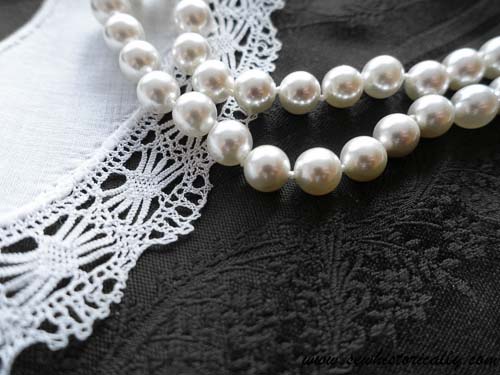
Complimentary Mourning
‘Complimentary mourning is worn for relatives-in- law, distant relatives, or friends one wishes to honor. This is black and white in mourning combination.’ (The Art Of Millinery, 1909) ‘worn by mothers for the mother of father-in-law of their married children, black would be worn for six weeks or so without crape; by the second wives for the parents of the first wife, for about three weeks, and in a few other cases’
Dress
‘In fashioning mourning garments the same modish lines that characterize ordinary dress should be observed, with individual taste and needs the first items to be considered. […] For the correct street costume, a light-weight dull-finished broadcloth or cheviot is the best choice, and it is made in two-piece style with coat and skirt. An accompanying shirt-waist or blouse may be made of dull-finished silk or of some of the soft woollens. Dull jet buttons give a pleasing finish, while at neck and wrists there should be fine white linen collar and cuffs, daintily hemstitched. The coat of this street costume may be in any becoming length, from the Eton or bolero to the three-quarter garment. The tailor skirt in comfortable walking length is the correct mode.’ (The Delineator, 1905, fashion plates with descriptions) – The Delineator, 1900, fashion plates with descriptions
Dress Materials and Trimmings
‘Soft, pliable materials such as henrietta, cashmere, cheviot, serge and eudora cloth – the last a fabric similar to henrietta […] Frequently the only trimming employed is self folds, tucks or plaits, though crape folds and bands are used with smart effect.
The popularity of crape, both for trimming and making entire gowns, has increased, and those who follow Fashion closely will provide at least one crape gown for the mourning outfit. The crape now used has attained comparative prefection in finish and lightness of texture, and even the crape veil is no longer objectionable, though it is rarely worn over the face.’ (The Delineator, 1905)
Barege and nun’s veiling for summer. Bombazine is no longer worn. ‘Melrose is in the most general use for widows. […] Silk crape, Henrietta, Albert crape, Melrose, rainproof crape, silk, Cyprus crape. Janus cord, Victoria cord, Balmoral cloth, Cashmere Francais, Kashgar Cashmere […] Crape cloth looks precisely like crape, but is much lighter and cooler. For summer, wear drap d’ete, a mixture of silk and wool, is suitable; barege for dinner dresses; nun’s veiling, etc., etc. The best all-black washing materials are cotton, satine, foulardine; black and white for slighter mourning, black with tiny white spots or sprigs. Neither velvet, satin, nor plush can be worn in mourning – that is in strict mourning – for they are not mourning materials.’ (Collier’s Cyclopedia, 1901) 1890s black silk for mourning wear.
Accessories
Veil
A crape veil is still worn, but no longer over the face (The Delineator, 1905). ‘The rigorous law is that this veil is to be worn three months, but, as a matter of fact, many widows wear the crape veil only six weeks, then throw it back and wear a Brussels net or tulle face veil hemmed with crape; many have the veil cut off and redraped to get rid of the weight, which is perfectly sensible, and in three months more this veil may be changed for one of net with deep crape hem; this also is later shortened, and a narrower hem allowed.
The orthodox rule for a widow is crape for two years, but now one is considered long enough, the second year dull silk, crepe de chine, chiffon, &c., taking its place. Pure white crape, made up and used in the same way as black, is equally deep, and now soft dove and steel gray are being worn, even to the long veil. […] The veil, if not too heavy, is quite becoming to most women; hence French women often adopt it for grades of mourning that really do not call for this; the taste, inclination, and purse of the mourner being at present the chief law as to the style and duration of mourning. It may, however, be taken for granted that in deep first mourning rich simplicity in design and line of veil is in best taste; later more ornate and picturesque designs may be suggested, but from first to last the chapeaux must be becoming. A woman of position must have the ultra-correct things in town, but in the country she may substitute a crape-trimmed net or plain chiffon veil on a crape toque or small, plain crape hat.’ (The Art Of Millinery, 1909).
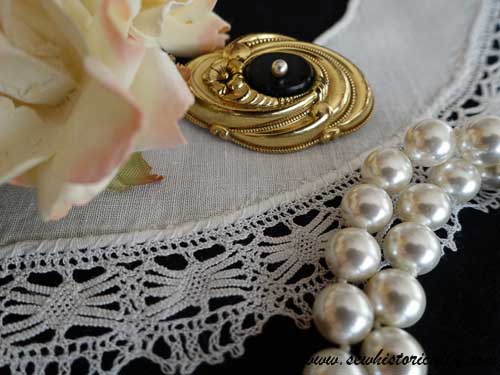
‘Net face veils are only permissible in the last periods of mourning, and these must be plain black, without figures other than small dots’ (The Art Of Millinery, 1909). 1895 long crape veil. 1897 advertisement with picture: nun’s veiling bonnet with 2 yards long silk grenadine veil and short Brussels net face veil with crepe edge. 1899 painting ‘The Widow’ with short face veil and long crape veil.
Hat
‘The bonnet for first mourning is all of crape, with white ruche tacked inside it, the small, close fitting shape, with long crape veil hanging at the back; besides this veil, a short one is worn over the face’ (Collier’s Cyclopedia, 1901). Crape or lustreless silk hat trimmed with crape, silk folds, or rosettes, worn by young women (not widows) (The Delineator, 1905). To trim 1909 mourning hats make some wild and full roses using crape scraps and some wire.
‘The “Marie Stuart” bonnet for first widow’s mourning is no longer the only correct thing; they are not becoming to all, and the changes in modern coiffure make modifications imperative; therefore, a small toque often replaces the bonnet, with a touch of white near the face, put in after the funeral.’ (The Art Of Millinery, 1909)
1900 photograph of widow with black and white bonnet and long veil. 1904 crape bonnet with long veil. 1890 painting of compassionate widow with bonnet. 1900 crape widow’s bonnet in Mary Stuart shape with white crape ruche (at the bottom of the page)
Outerwear
For a widow: silk or henrietta mantle (jacket or capes for younger widows), trimmed with crape; in summer: crape wraps. ‘furs are not admissible in widows’ first mourning, though very dark sealskin and astrakhan (a rough kind of cloth with a curled pile) can be worn when the dress is changed. In other mournings, furs are now very generally worn — that is, after the first few months, but only dark furs.’ (Collier’s Cyclopedia, 1901). 1893 photograph of widow with coat and face veil. 1900s crape-covered coat.
Accessories
Black kid gloves. Cambric handkerchiefs with black border. ‘If in summer a parasol should be required, it should be of silk deeply trimmed with crape, almost covered with it, but no lace or fringe for the first year. Afterward mourning fringe may be put on. A muff, if required, would be made of dark fur or of Persian lamb.’ (Collier’s Cyclopedia, 1901)
Jewelry
‘No ornaments are worn in such deep mourning, except jet, for the first year. Jet is, of course, allowable.’ (Collier’s Cyclopedia, 1901)
Cap
‘Caps, either of lisse, tulle of tarlatan, shape depending very much on the age.’ Widow’s caps have long streamers, widows usually wear caps in Marie Stuart style (Collier’s Cyclopedia, 1901) of white crepe lisse with ‘long white tulle veil floating from the back’ (The Art Of Millinery, 1909)
Collar
Lawn and muslin collar and cuffs. The ‘straight all-round shape, turning down over the collar of the dress, is the most usual’ (Collier’s Cyclopedia, 1901)
Cuffs
Widow’s lawn cuffs, nine inches long. ‘They are not intended to overlap, but just to meet, fastened with two buttons and loops, placed near the upper and lower edges. The ordinary depth is five inches, with a wide hem at the top and bottom of an inch and a half depth.’ (Collier’s Cyclopedia, 1901)
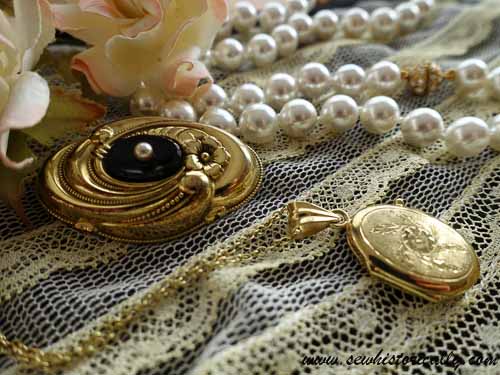
Lingerie
Some ‘women like black lingerie inset with white lace for mourning. Mourning lingerie takes the form in many cases of fine white cambric threaded with black satin, and corsets to match.’ (Every Woman’s Encyclopaedia, 1910-2)
Mourning by mail-order
‘In all cases of mourning, it is the best plan to write to some well-known house for patterns; good mourning establishments can afford to sell better materials at cheaper rates than inferior houses. Large firms have always a good choice of materials for mourning on hand; and it is really far greater economy to buy good materials when going into mourning , than cheap flimsy stuffs, which give no wear at all; besides, such houses send out books of fashions and prices for making up mourning costumes, which give a good idea of the expense to be incurred, even if it is not found cheaper to purchase and have mourning made up by them.’ (Collier’s Cyclopedia, 1901)
‘At short notice. By letter or telegram. All grades of mourning kept in stock for immediate use. […] Dresses can be made to order from any measurements in two days.’ (Jordan, Marsh & Co. advertisement, 1897)
Mourning and Society
‘During the first period of mourning it is not considered becoming to visit places of amusement or to enter social life or indulge in gaiety of any kind. After a certain time elapses six months or a year, according to the depth of the mourning—a person is at liberty to go out quietly to concerts, theatres, informal dinners, etc.
It is customary to send a few words of sympathy to the family after a death has taken place. Such letters should be brief and written with real interest and affection, otherwise they had better be omitted.
During a period of mourning, note paper and visiting cards are usually edged with a black border, the width of this to be determined by the depth and recency of the mourning. The very wide band is exaggerated, ostentatious, and in bad form.
No invitations of any kind should be left at a house of mourning, until after a lapse of a month or more, according to circumstances. Then, cards to balls, weddings, and general entertainments may properly be sent. When persons who have worn black are ready to resume their social life, they should leave cards with all their friends and acquaintances, either in person or by sending them through the mail.’ (Household Companion: Book Of Etiquette, 1909)
‘Ladies in deep mourning should not dance, even if they permit themselves to attend a ball. Should they do so, black and scarlet or violet is the proper wear. Where the mourning is sufficiently slight for dancing to be seemly, white, with mauve, violet or black trimmings, flounces, etc., is proper.
White gloves befit the ball-room; in mourning they may be sewn with black.’
‘Invitations to large entertainments, receptions, etc., may be sent to persons in mourning if the bereavement has not occurred within a month; but etiquette permits them to refuse without assigning a reason, sending, however, on the day of the entertainment, black-bordered visiting-cards, which announce the cause of their absence. Invitations to dinners and luncheons should never be given to persons in recent affliction.’ (Household Companion, 1909)
‘No invitations would be accepted before the funeral of any relatives closely enough related to you to put on mourning for. In the case of brothers, sisters, parents and grandparents, society would be given up for at least three months, if not more, and it would be very bad taste to go to a ball or large festive gathering in crape. Widows do not enter society for at least a year – that is, during the period of their deepest mourning. […]
It is better taste to wear mourning in making the first call after a bereavement on friends, but this is not a decided rule, only a graceful method of implying sympathy for those who are suffering affliction. But calls are not made until the cards with “thanks for kind inquiries” have been sent in return for the cards left at the time of decease. Letters of condolence should always be written on slightly black-edged paper, and it would be kind to intimate in the letter that no answer to it will be expected. Few realize the effort it is to those left to sit down and write answers to inquiries and letters, however kind and sympathizing they may have been.’ (Collier’s Cyclopedia, 1901)
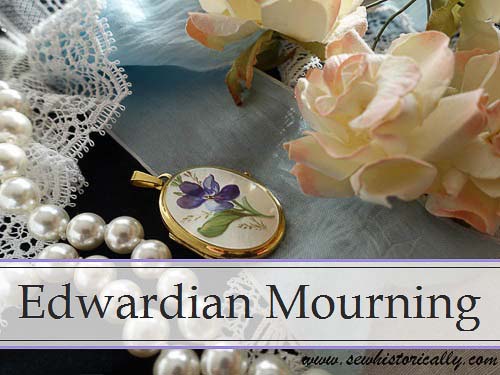
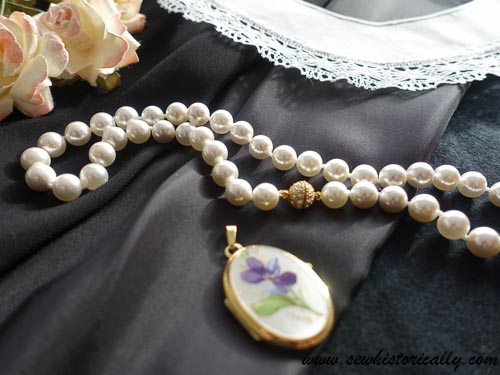
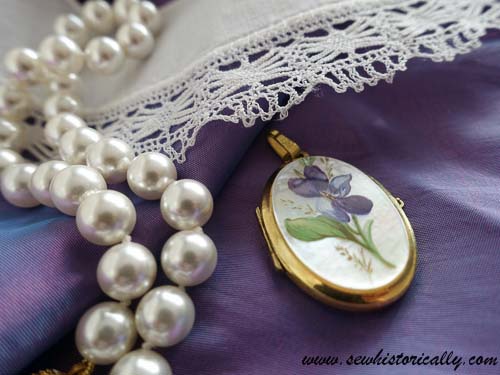
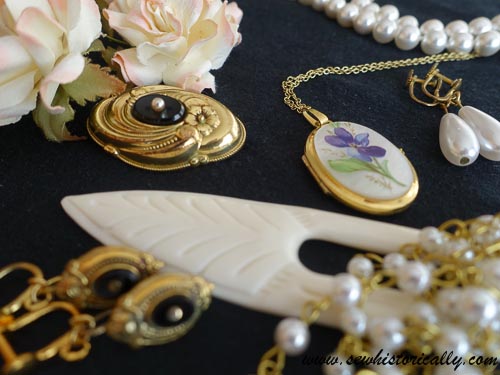
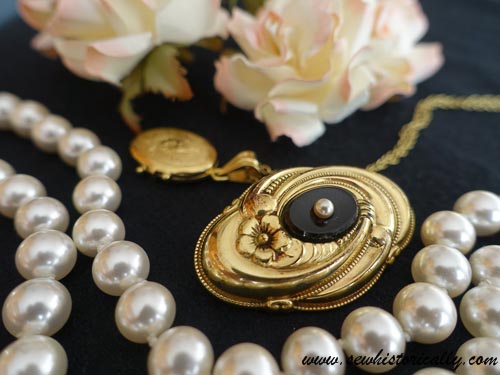
Wow, very interesting! I never knew of the different stages of mourning. Definitely a good read, thanks for sharing it.
Thanks for stopping by, Christine!
Dear Sewhistorically,
I am researching mourning practices and customs continued into the 1920s, especially in regard to the high profile deaths like those of President Harding and the next year, Calvin Coolidge Jr. What sources would you recommend for insight on 20s era mourning? (Which in large, I am sure, is a continuation of Victorian etiquette). Thank you most kindly.
You could search for 1920s mourning customs in old newspapers and books. And here‘s a post about mourning customs in post-war England.